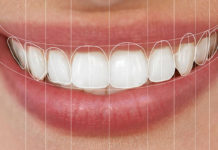
Avoid the Sales Pitch and Evaluate Technology Effectively
The 1964 stop-motion version of Rudolph the Red-Nosed Reindeer includes a place called the “Island of Misfit Toys.” The island was a place where unwanted or poorly implemented toys would go because no one had a use for them.
Many dental practices have a similar place—usually a storage room in a forgotten corner of the practice where unused technology purchases gather dust. These “rooms of misfit technology purchases” represent ineffective capital investments. Some of the things I have seen gathering dust include lasers, digital impression systems, intraoral camera systems, and the like. Such tools can be useful and effective if their acquisition and implementation is properly and strategically executed.
The acquisition of new technologies is an important part of providing the highest level of patient care. Dental practices that understand how to strategically evaluate and implement new technologies have a competitive advantage over those that do not or cannot. How do you know if a dental technology purchase will be worthwhile?

Using dental technology effectively and maximizing your return on investment (ROI) does not need to be a complicated or overly expensive process. It does, however, require that dentists have a process in place to correctly evaluate and introduce new technologies into the workplace. When evaluating new technological investments, I recommend the following:
BUY SOLUTIONS, NOT FEATURES
Most dentists have experienced a slick technology sales presentation where they are shown incredible advancements that lead to the reaction, “Wow, that’s really cool!” Such a phrase is music to the ears of every sales representative.
More than once, I have personally made purchasing decisions based solely on a “wow” factor. Inevitably that feature did not end up being used, or was not used to its full potential. This common mistake happens when approaching technology purchases from a features-based standpoint, rather than a solutions-based standpoint. This problem is one of the main reasons many technology acquisitions end up gathering dust.
To avoid this trap, take time to look at the various workflows that constitute the daily operations of your dental practice. Determine where areas of weakness or opportunities for improvement exist. Making this analysis a part of monthly staff meetings is a great way to identify what kinds of technologies you should be looking at and where you will get the highest return on your investment.
INVOLVE YOUR TEAM MEMBERS
Involving team members in technology purchases is critical because doing so creates buy-in with the team. If your team is left out of this process, they may resist using the new technology. Having team members identify areas for technology improvements and then including them in the consideration process dramatically increases the ROI for technology purchases.
To test this out (without having to acquire a new piece of technology), consider your practice management system. In your next staff meeting, ask team members if they are manually entering data into a spreadsheet for the purpose of generating a report.
Take that manual process, identify what information is being compiled, and then contact your practice management system provider. Give them information about the report and ask if their system can automatically generate a similar one. In most cases, a solution is already available but many dental teams aren’t utilizing it.

IDENTIFY AREAS OF IMPROVEMENT
An effective way to approach technology acquisitions is to identify inefficiencies in your workflow and evaluate a technology-based solution. If you approach a technology vendor with a specific problem, he or she will have to work for you. Technology vendors typically work with hundreds, if not thousands, of dental practices. When you present them with a problem that their product may solve, they will have to demonstrate how it accomplishes the task.
Consider talking with people in the engineering department rather than the front-line salespeople. When you do this, you’ve moved beyond the sales pitch into problem-solving. Identifying a problem for the vendor to solve not only ensures that your capital investment adds value to your practice, but it requires vendors to work harder on your behalf.
TAKE IT FOR A TEST DRIVE
Nearly all technology providers offer a free evaluation period for major technology purchases. Typically, vendors will deliver the equipment and give a quick demonstration on a (usually idealized) test case, and then the equipment will sit unused until the evaluation period is almost over—at which time a rush decision will be made.
This allows dentists and teams to take full advantage of the evaluation period. Do not procrastinate running any tests. On the first day, make sure cases are readily available for testing. Doing so will help identify any initial glitches or roadblocks that could hinder your team from implementing the equipment.
A good evaluation plan includes:
1. A list of expectations. Prior to the installation of equipment, send the vendor a list of expectations. Include a statement that defines exactly what you are hoping the technology will accomplish and what training you expect to support the technology. This statement helps focus the installation and initial training so you can make a proper evaluation.
2. A sampling of five to ten cases. Plan to test five to ten cases on the new technology. The samples should include simple cases as well as more complex ones. Ask the installer/trainer to go through all the cases with you. After that, use the technology daily during the evaluation period.
3. An idea of what the solution looks like. If the technology is being considered to save time, make sure that you measure what the time savings actually is and how it compares to your current workflow.

4. An integration plan. Make a plan that integrates the new technology within your existing workflow or outline a strategy for changing the workflow. Be sure to involve the team members who will be using the technology.
5. Contact information for support. Instead of just calling a general support line, ask for the name of a specific person and get their direct contact information so that when you run into issues or have questions, things can be resolved quickly. Let the vendor know that in addition to testing the equipment, you are also evaluating their support.
6. A list of consumables, their expected life span, and their costs. During the evaluation period, track the lifespan of the consumables to make sure their claims match your experience.
7. A test of the equipment in the location where it will be used. You might be surprised at how something as simple as not having an electrical outlet close by can result in an expensive piece of technology going unused.

BEWARE OF VERSION 1.0
In general, first generation technology tends to have more issues and shortfalls. However, don’t assume that you should wait until later generations before adopting technology. Early adopters can experience great advantages. If you adopt new technology early, your input has a greater chance of shaping how the equipment evolves. In some cases, adopting new technology early (especially something with a large patient demand) can provide a competitive advantage over practices that wait.
Steep discounting for first generation equipment is common, especially if you are expected to provide input and improvement suggestions. You may also be able to negotiate an agreement that allows a discounted upgrade path for subsequent generations of equipment. Negotiating an upgrade path is a great way to increase the value of the equipment while at the same time reducing some of the costs and risks of being an early adopter.
SINGLE POINTS OF FAILURE
In situations where the equipment is a key part of your production, and for which there is no easy or efficient fallback, consider purchasing a backup. If the equipment isn’t too costly, having more than one piece of equipment is justifiable, especially if not having the equipment dramatically impacts patient care or practice production.
If having more than one piece of equipment is cost-prohibitive, be sure to negotiate a service level agreement (SLA). For example, if you buy a state-of-the-art cone beam or similar digital X-ray machine, it isn’t feasible to purchase two. But having that equipment go down for several days isn’t acceptable either.
An SLA spells out terms like what parts, if any, will be inventoried locally so that a repair can be taken care of quickly. An SLA also details expected response times once a repair is needed. Some SLA agreements stipulate three-hour response times with a local service provider. When working with a piece of critical equipment that is too costly to have a spare, an SLA is a great alternative.

Aside from a single piece of equipment failing, consider the potential for bottlenecks. I have seen this occur with intraoral camera systems. For example, a dental practice buys one and then passes it around as needed. If patients are waiting in the chair because someone else is using the camera, you have a bottleneck problem.
Having a patient wait an extra 5 to 10 minutes might not seem like a big deal, but in aggregate, the wait time created by under-provisioned technology can cost thousands of dollars in lost productivity. Any time you purchase technology, make sure to keep your eyes open for potential problems created by single points of failure, as well as bottleneck issues.
CONCLUSION
Technology is part of today’s world. Being a dentist doesn’t just mean doing dentistry—it means making sound business decisions, including large capital investments in technology.
Don’t let your practice’s technology purchases go to the “Island of Misfit Dental Purchases.” Ensure that you are not making purchasing decisions based upon sales presentations, but instead on an in-depth knowledge of your practice, its workflows, and the needs of your patients and team. Doing so will result in a better return on your technology investments, while at the same time creating a competitive advantage over less-effective adopters of technology.









